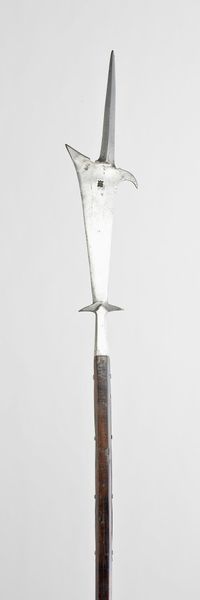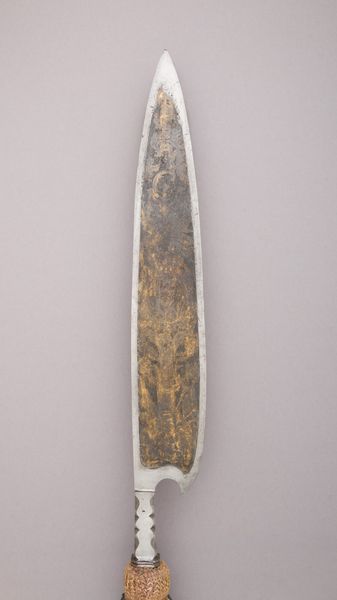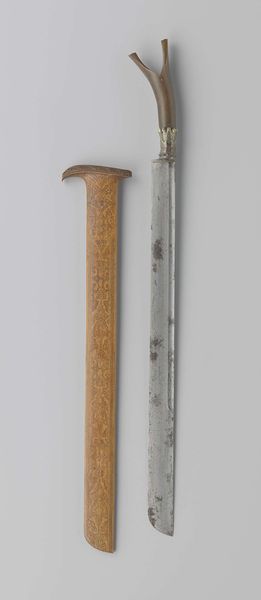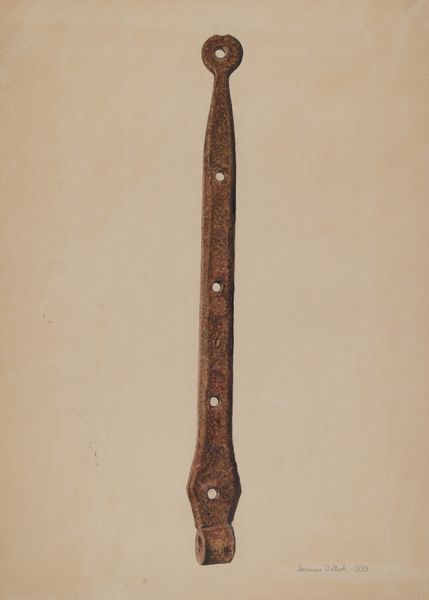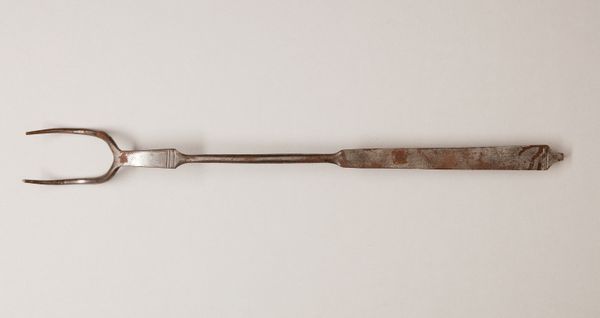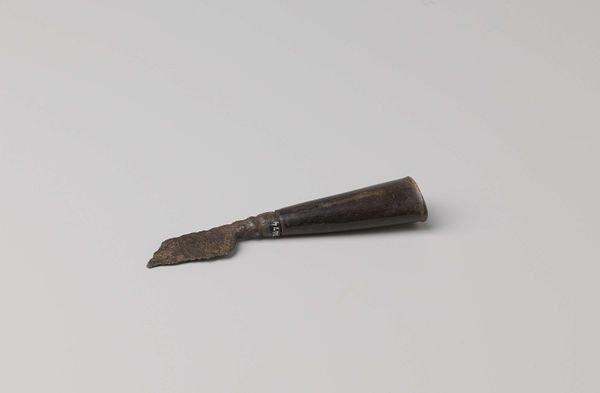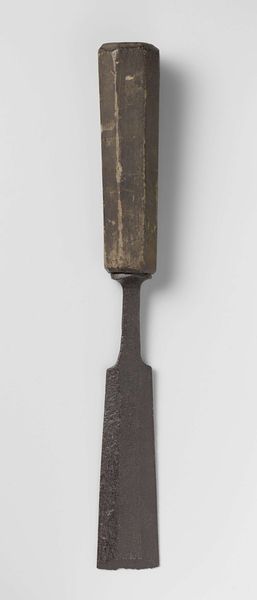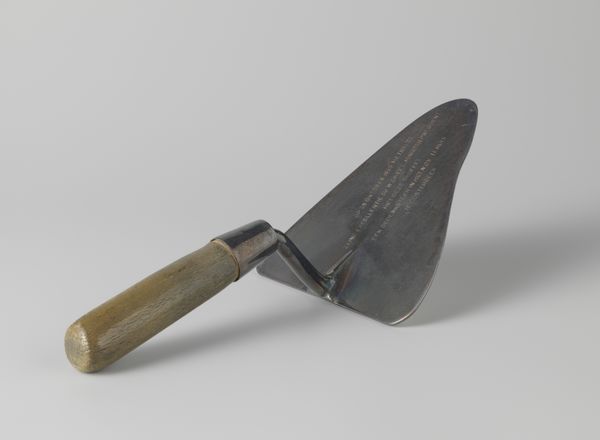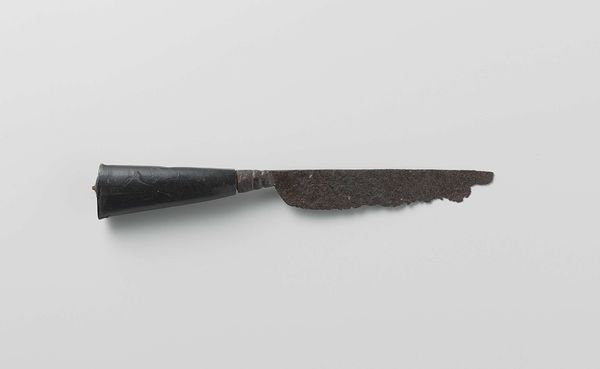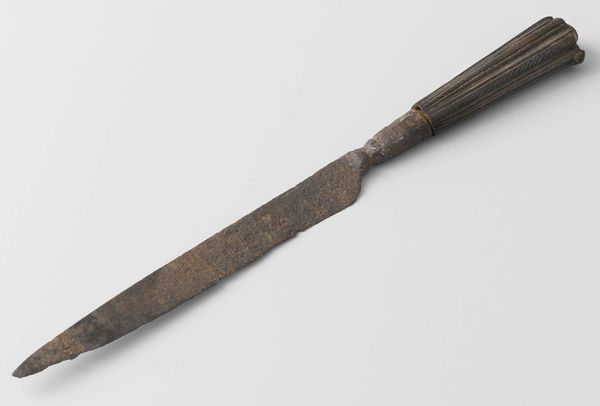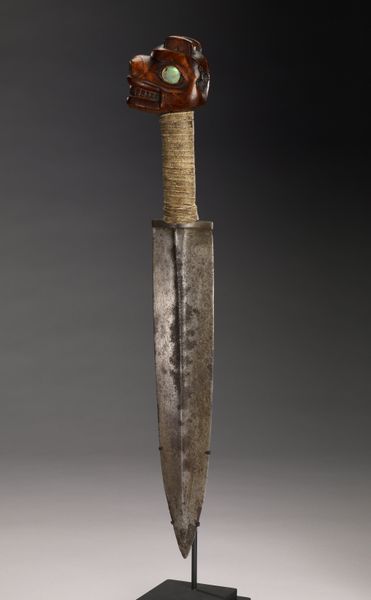
carving, metal, sculpture
#
medieval
#
carving
#
metal
#
stone
#
sculpture
#
asian-art
#
form
#
sculpting
#
geometric
#
sculpture
Dimensions: L. 16 1/2 in. (41.9 cm); L. of head 5 1/2 in. (14 cm); W. 2 in. (5.1 cm); Wt. 4.2 oz. (119.1 g)
Copyright: Public Domain
Curator: Here we have an 18th-century Japanese arrowhead, known as *Yanone*, created by Kanabo Masatsugu. It is currently housed here at the Metropolitan Museum of Art. Editor: It strikes me immediately as remarkably austere, almost severe. The metal’s weathered surface gives it such a primal presence. The patina speaks of use. Curator: Indeed. *Yanone*, while functional, often carried symbolic weight, reflecting a warrior’s status and aesthetic sensibilities in feudal Japanese society. Arrows weren’t simply projectiles; they were embodiments of honor and martial prowess. This one being attributed to Kanabo Masatsugu. Editor: Let’s focus on this ‘austere’ quality. It isn't merely functional. There is a purposeful manipulation of geometric shapes. The flattened, spade-like blade flares gently, then narrows to meet the shaft with crisp angles. Notice the central ridge running down its length. What do you make of the way it catches the light? Curator: This blade represents the refinement of Japanese metalworking within its rigid class structure. Production of this arrowhead was directly related to the Edo period military government policies in Japan. Weaponry even in arrowheads are often adorned with engravings or sculptural details representative of the social stature that determined who would be employing it on the field. Editor: Despite the potential for such decoration, I return to this feeling of refined utility. The absence of elaborate ornamentation amplifies the form. Do you suppose it reveals an emphasis on function over purely aesthetic considerations or is there another message embedded here? Curator: A case can certainly be made. Yet, paradoxically, it underscores how even everyday tools become signifiers within power structures, carrying unspoken rules and boundaries of the samurai class, during the Medieval times and forward. It embodies the Bushido code. Editor: I can see that perspective; however, consider how its surface creates textural tension between light and dark areas. That symmetry is quite mesmerizing. Curator: This has really given me pause to rethink how the aesthetic value is so carefully intertwined with social functions. Editor: For me it reinforced the simple beauty and sophistication born out of considered craftsmanship.
Comments
No comments
Be the first to comment and join the conversation on the ultimate creative platform.
